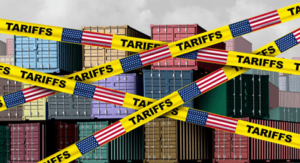
Impact of Debt Crisis On Climate Action
Impact of debt crisis on climate action is profound and multifaceted. With emerging-market and developing economies requiring trillions annually for climate investments, the escalating debt crisis poses a formidable barrier.
Over 95 countries facing debt distress or high borrowing costs are precisely those needing financing for climate and development goals. However, investments in climate resilience often don’t yield immediate economic growth, exacerbating the cycle of crises.
Addressing this necessitates ambitious debt relief initiatives and innovative financing mechanisms. Without concerted action from all creditors and reforms in multilateral development banks, the costs of inaction on climate action far outweigh those of prevention.
Impact of Debt Crisis On Climate Action
The urgency of addressing climate change has never been more palpable. With each passing year, the consequences of inaction become increasingly dire. However, as the world grapples with the need for substantial climate investments, a looming debt crisis threatens to impede progress.
The confluence of these two challenges poses a significant obstacle to achieving global climate goals and sustainable development. Moreover, the impact of debt crisis on climate action exacerbates the complexity of the situation, potentially diverting resources away from crucial environmental initiatives and hindering efforts to mitigate climate change.
Here’s a closer look at how the debt crisis is impacting climate action:
Table of Contents
1. The Magnitude of Climate Investment Needs
According to the Independent High-Level Expert Group on Climate Finance, emerging-market and developing economies (EMDEs) require an estimated $2.4 trillion annually in climate investments to meet their climate goals, of which $1 trillion needs to come from external sources.
Additionally, achieving the United Nations Sustainable Development Goals (SDGs) necessitates an increase of $3.5 trillion in new investments annually by 2030. These figures underscore the enormity of the financial requirements to combat climate change effectively.
The impact of debt crisis on climate action further complicates the ability of these economies to access the necessary funds, potentially hindering their progress towards achieving climate targets.
Read More: Green Hydrogen Development in Africa
2. Escalating Debt Crisis
A recent study conducted by the Boston University Global Development Policy Center revealed alarming statistics regarding the debt situation in EMDEs. More than half of these countries, totaling 62 nations, are already at high risk of debt distress.
Furthermore, an additional 33 countries face severe constraints in accessing capital markets due to various factors, including economic stagnation post-COVID-19, interest rate hikes by advanced economies, and low credit ratings. This mounting debt crisis not only threatens economic stability but also poses a significant obstacle to climate action efforts, as strapped governments may divert resources away from sustainability initiatives in order to manage debt burdens.
Read More: Impact of Climate Change
3. Impact on Climate Vulnerable Countries
Most of the countries grappling with debt distress or high borrowing costs are precisely those in dire need of financing for climate action and sustainable development. Among these nations, 83 have higher requirements for investments in climate change mitigation or adaptation compared to the median country.
The impact of debt crisis on climate action exacerbates the challenges faced by these countries. Additionally, 73 of them have significant potential to expand their protected areas, essential for biodiversity conservation and resilience against natural disasters.
Read More: Climate-friendly Investments in Developing Countries
4. Long-Term Resilience vs. Short-Term Growth
Investments in climate resilience and conservation often prioritize long-term benefits over immediate economic gains. While crucial for mitigating future crises, such investments may not contribute substantially to short-term economic growth.
However, they play a vital role in building resilience against extreme weather events, thereby reducing the likelihood of future debt crises. The impact of debt crisis on climate action can be significant, as they may divert resources away from sustainable initiatives and hinder progress towards mitigating climate change. Climate vulnerability and nature loss can exacerbate debt sustainability challenges, increasing sovereign risk and capital costs.
5. Proposed Solutions
To address the intertwined challenges of climate action and debt crisis, targeted interventions are imperative. An ambitious debt-relief initiative akin to the Highly Indebted Poor Countries Initiative has been proposed to provide meaningful relief for countries facing sovereign-debt crises. However, effective implementation requires active participation from all creditors, including multilateral institutions.
Moreover, considering the impact of debt crisis on climate action, innovative financing mechanisms such as Sustainable Future Bonds and reforms within Multilateral Development Banks (MDBs) can facilitate easier access to capital for climate-related projects.
Read More: Income Inequality in India
Bottom Line
The impact of debt crisis on climate action is significant and multifaceted. Urgent measures are needed to break the cycle of environmental and economic crises and pave the way for sustainable growth. By implementing targeted debt relief, enhancing credit mechanisms, and reforming MDBs, the international community can mitigate the adverse effects of debt distress on climate action. The cost of inaction far outweighs the cost of prevention, making concerted global efforts imperative in addressing these pressing challenges.







